![劍橋醫學英語 [Professional English in Use Medicine]](https://pic.windowsfront.com/10064223/51a1ea79-31d1-4686-9576-2bafc79979ec.jpg)

具體描述
編輯推薦
professional English in Use Medicine contains 60 units covering a wide variety of medical vocabulary. Topics include diseases and symptoms, investigations, treatment, examining, and prevention. The book also introduces general medical vocabulary related to parts and tuncions of the body, medical and para medical personnel, education and training, research, and presentations. Primarily designed as a self study reference and practice book, it can also be used for classroom work and one [o one lessons and is suitable for intermediate and upper intermediate studuentsProtessional English in Use Medicine has been carefully researched using the Institute for Applied Language Studies medical corpus, as well as authentic texts, document sand cases 60 easy-to-use units: vocabulary items are presented and explained in context on left-hand pages with a range of practice exercises on right-hand pages. A focus on functional language, such as taking a history and examining, gives learners the confidence and ability to function in English in a medical environment."Over to you sections allow learners to apply the vocabulary they have learned in the unit to their own working lives.Includes a comprehensive, learner-friendly answer key and index.
Protessional English in Use Medicine is a must for medical practitioners who need to use English at work or for study, either in their own country or abroad.
內容簡介
《劍橋醫學英語》是為學習醫學且具有中高級英文水平的學習者設計的,它提供的醫學專業英語,有助於提高學習者對醫學期刊、書籍的閱讀水平,幫助醫學工作者或學生參加醫學國際會議,或到講英語的國傢作短期海外實習。此書可作為自學的學習資料,也可以作為課堂教學的課本,既可一對一來學習還可以學習小組的形式來學習。
《劍橋醫學英語》由60個雙頁主題單元組成,前46個主題涵蓋瞭醫學領域的方方麵麵,從健康、疾病到調查研究。其餘的14個單元側重於介紹有關醫學的溝通技能。
每一個單元的左手邊頁,詳細地解釋瞭關鍵詞和錶達方式;右手邊頁上的一係列練習則會幫助學習者檢查和進一步理解所學到的知識。
書的後麵附有練習答案和附錄。
《劍橋醫學英語》有特色的地方是每一單元都設計有“請你參與”部分。這為每一位學習者提供瞭情景模擬的機會,可以將學習到的新詞匯和錶達法用到自己相關的醫學專業領域中去,因而對新知識可以更好地消化和吸收。
內頁插圖
目錄
INTRODUCTIONBASICS
1 Health and illness
A Asking about health
B Sickness
C Recovery
2 Parts of the body 1
A Parts of the body
B Referring to parts of the body
C Describing radiation of pain
3 Parts of the body 2
A The abdomen
B The chest
C The pelvis
4 Functions of the body
A Eating
B The five senses
C Other functions
D Less common functions
MEDICAL AND PARAMEDICAL PERSONNEL AND PLACES
5 Medical practitioners 1
A Practitioners
B Specialties
C Choosing a specialty
6 Medical practitioners 2
A Hospital staff
B Medical teams
C Shifts
7 Nurses
A Nursing grades
B Support workers
C Specialization
D The nurses role
8 Allied health professionals
A Community health
B Technicians
C Prosthetists and orthotists
D Opticians
9 Hospitals
A Introduction to a hospital
B Outpatients
C Inpatients
10 Primary care
A The National Health Service
B The practice team
C A GPs day
EDUCATION AND TRAINING
11 Medical education 1
A Medical education in the UK
B Extract from an undergraduate prospectus
C A students view
12 Medical education 2
A The Foundation Programme
B People in medical education
C Medical qualifications
13 The overseas doctor
A Types of registration
B PLAB
C PLAB stations and advice
SYSTEMS, DISEASES AND SYMPTOMS
14 Symptoms and signs
A Describing problems
B Presentation
C Talking about symptoms
15 Blood
A Full blood count
B Anaemia
C Pernicious anaemia
16 Bones
A Bones
B Fractures
C Treatment of fractures
17 Childhood
A Milestones
B Common infectious diseases
C Coeliac disease
18 The endocrine system
A Excess and deficiency
B Negative feedback systems
C Goitre
D A letter of referral
19 The eye
A Parts of the eye
B Examination of the eye
C Retinopathy
20 The gastrointestinal system
A Examination of the abdomen
B The faeces
21 Gynaecology
A The female reproductive system
B Menstruation
C A gynaecological consultation
D Contraception
22 The heart and circulation 1
A Shortness of breath
B Heart rhythm
C Heart failure
23 The heart and circulation 2
A Physical examination
B Examining the heart and circulation
24 Infections
A Fever
B Microorganisms
C Source and spread of infection
25 Mental illness
A Psychiatric disorders
B Substance abuse
C Affective disorders
D Neurotic and stress-related disorders
E Other types of functional disorder
26 The nervous system 1
A Sensory loss
B Motor loss
C Loss of consciousness
27 The nervous system 2
A The motor system
B Tendon reflexes
C Coma
28 Oncology
A Neoplasms
B Symptoms and signs of malignancy
C Treatment of tumours
29 Pregnalacy and childbirth
A Childbirth
B Labour
C Presentation and lie
30 The respiratory system
A Cough
B Auscultation
31 The skin 1
A Some types of skin lesion
B Rashes
32 The skin
A Injuries to the skin
B Case report
C Sores
33 The urinary system
A Urinary symptoms
B Urinalysis
INVESTIGATIONS
34 Basic investigations
A Ophthalmoscopy
B Blood pressure
C Taking blood
35 Laboratory tests
A A Microbiology test request form
B A Biochemistry and Haematology lab report
C Terms used to describe lab results
36 Endoscopy
A Functions of endoscopy
B Enteroscopy
C Report of a diagnostic endoscopy
37 X-ray and CT
A Radiography and radiology
B X-ray examination
C Computed Tomography
38 MRI and ultrasound
A Magnetic Resonance Imaging (MRI)
B Ultrasound
C Preparing for medical imaging
D Describing medical imaging
39 ECG
A Uses of an ECG
B ECG procedure
C A normal ECG
TREATMENT
40 Medical treatment
A Prescriptions and drugs
B The British National Formulary
41 Surgical treatment
A The operating theatre
B Instruments
C The operation
D An operation report
42 Therapies
A Radiotherapy and chemotherapy
B A day in the life of a physiotherapist
C Cognitive Behavioural Therapy
PREVENTION
43 Screening and immunization
A Screening
B Common screening tests
C Immunization for travellers
EPIDEMIOLOGY
44 Epidemiology
A Rates
B Incidence and prevalence
C Association and causation
ETHICS
45 Medical ethics
A GMC guidelines
B Bioethical issues
C Assisted dying
RESEARCH
46 Research studies
A Case-control studies
B Cohort studies
C Trials
D Variables
TAKING A HISTORY
47 Taking a history 1
A A full case history
B Personal details
C Talking about pain
48 Taking a history 2
A Drug history
B Family history
C Social and personal history
49 Taking a history 3
A Reviewing the systems
B Asking about the central nervous syster
C Patient ideas, concerns and expectation
D Phrasal verbs in history-taking
EXAMINATION
50 Physical examination
A Examining a patient
B Giving instructions
51 Mental state examination
A Some symptoms of psychiatric disorders
B Mood
C Typical questions from a mental state examination
EXPLANATION
52 Explaining diagnosis and management
A Explanations
B Using lay terms in explanations
C An explanation of angina
53 Discussing treatment
A Offering options
B Advising a course of action
C Advising patients to avoid something
D Warnings
54 Giving bad news
A Principles of giving bad news
B A consultant medical oncologists report
PRESENTATIONS
55 Data presentation 1
A Referring to a table or figure
B Comparing variables
C Approximating
56 Data presentation 2
A Line graphs
B Pie charts
C Describing trends
57 Research articles
A The structure of a research article
B Objectives
C Main findings
58 Abstracts
A Structured abstracts
B The BMJ abstract
59 Conference presentations
A The structure of a presentation
B The introduction
C Signalling
D The conclusion
60 Case presentations
A Sections of a case presentation
B Bedside presentation
C Slides
Appendix I
Parts of the body
Appendix Ⅱ
Medical abbreviations
Appendix Ⅲ
Types of medication
Appendix Ⅳ
Symptoms and pain
Appendix Ⅴ
Verbs used in instructions
Appendix Ⅵ
Lay terms and definitions
Answer key
Index
精彩書摘
Hospital staffThe people who work in any type of workplace, including hospitals, are called the staff.
The medical staff in a British hospital belong to one of four main groups:
A pre-registration house officer (PRHO), or house officer, is a newly graduated doctor i the first year of postgraduate training. After a yeaz; he or she becomes a registered medi practitioner. In the current system of training, the Foundation Programme, the name fol these junior doctors is Foundation Year I doctor (FY1). (See Unit 12)
A senior house officer (SHO) is in the second year of postgraduate training. The title is now Foundation Year 2 doctor (FY2), but the old terms senior house officer and SHO are still used.
A specialist registrar (SpR) is a doctor who has completed the Foundation Programme, and is training in one of the medical specialties. There are also some non-training registrdoctors who have completed their training but do not wish to specialize yet.
A consultant is a fully qualified specialist. There may also be some associate specialistssenior doctors who do not wish to become consultants. In addition, there is at least o medical (or clinical) director, who is responsible for all of the medical staff.
Medical teams
Consultant physicians and surgeons are responsible for a specific number of patients in the hospital. Each consultant has a team of junior doctors to help care for those patients. In many hospitals, there are multidisciplinary teams which consist not only of doctors but also of physiotherapists and other allied health professionals (see Unit 8). When patients enter - or are admitted to hospital, they are usually seen first by one of the junior doctors on the ward where they will receive treatment and care. The junior doctor clerks them takes their medical history (see Units 47-49) and examines them. Some time later, the registrar also sees the patients, and may order investigations or tests, for example X-rays or an ECG, make a provisional diagnosis, and begin treatment. The consultant usually sees the new admissions - people who have recently been admitted to the ward for the first time on one of the regular ward rounds, when the management of the patients is discussed with the registrar. Consultants also decide when a patient is ready to be discharged (sent home). On the ward round, the consultant is accompanied by the team and a nurse, and they visit all the patients in the consultants care. Shifts
Junior doctors now normally work in shifts, which means they normally work for eight hours every day, for example 7 am to 3 pm, and are then free until 7 am the next day. After a week they change to a different shift, for example 3 pm to 11 pm or 11 pm to 7 am. The alternative system is to work from 9 am to 5 pm every day and to take turns to be on call available to return to the hospital if necessary - from 5 pm to 9 am the next day. Days on call are set out in a rota, or list of names and times. Doctors on call carry a radio pager, or bleeper, a device which makes a noise when someone is trying to contact them.
前言/序言
用戶評價
我更傾嚮於使用這本教材進行碎片化學習,因為它在設計之初就考慮到瞭現代醫務工作者時間緊張的現實。每個單元的長度都控製得恰到好處,核心概念的講解清晰明瞭,並且配有大量的練習題來即時鞏固所學。這些練習題的設計非常巧妙,它們不是那種機械的“填空或選擇”,而是更傾嚮於情景模擬和批判性思考。比如,它會給你一段冗長、信息密度極高的患者病史記錄,然後要求你用不超過三句話的高度概括性的專業英語來總結關鍵問題,這極大地鍛煉瞭我快速提煉信息和精準錶達的能力。更重要的是,書中對發音和語調的細微之處也有所涉及,雖然是書本教材,但通過配閤其配套的音頻資源(我假設它有的話,因為好的教材通常都配套),能夠幫助學習者建立正確的口語習慣。我發現,很多時候我們寫得不錯,但一開口就暴露瞭“書麵語”的痕跡。這本書似乎早就預料到瞭這一點,通過結構化的練習,強迫我們把書本上的知識轉化為可以自然流露的口頭錶達。這對於提升我在查房和病例匯報時的自信心,起到瞭決定性的作用。
評分我購買這本書純粹是齣於對提高專業英語錶達準確性的迫切需求,畢竟在國際醫學文獻閱讀和病例討論中,一個詞用錯可能導緻對病情理解的偏差。這本書最讓我驚艷的是它對“學術寫作規範”的強調。很多時候,我們習慣瞭中文的錶達習慣,寫齣來的英文報告總感覺“中式英語”味太重,不夠地道、不夠簡潔有力。這本書裏專門開闢瞭一個版塊,專門針對“Abstract Writing”和“Case Report Structure”進行瞭深入的講解。它細緻到瞭逗號該不該用、哪個介詞放在動詞後麵最閤適,甚至連那些看似不起眼的“連接詞”如何使用纔能讓論述邏輯更加流暢,都做瞭詳盡的對比分析。我記得有一次,我寫一份關於罕見病的小報告,卡在如何用精準的動詞來描述病理生理過程上,翻閱這本書的“Verbs in Pathology”部分後,我找到瞭好幾個比我原來用的詞匯更專業、更具學術性的替代方案。這種即插即用的實用性,讓我在後續的寫作中效率和質量都得到瞭顯著提升。它不僅僅是在教你“怎麼說”,更是在教你“怎麼像一個專業的醫學研究者那樣去構建你的論述體係”。這套書的編排邏輯,仿佛是一位經驗豐富的前輩,在你身邊耐心批閱你的每一份文稿,並給齣最切中要害的修改意見。
評分說實話,剛拿到書的時候,我有點擔心它會過於側重於某一個醫學分支,畢竟醫學領域過於寬泛。但這本書的廣度確實齣乎我的意料。它沒有試圖成為一本包羅萬象的醫學詞典,而是巧妙地選擇瞭那些在不同專科中都具有高度通用性的語言模塊進行深化。例如,在處理“Informed Consent”的語言時,它不僅提供瞭標準化的法律術語,還區分瞭不同文化背景下與患者溝通時應注意的語氣和措辭差異,這對於那些未來可能涉足國際醫療援助或者跨國閤作項目的同事來說,是非常寶貴的軟技能訓練。我特彆欣賞它對“Idiomatic Expressions in Medical Context”的處理方式。醫學英語不全是冷冰冰的術語,有時候,地道的錶達方式能讓溝通更加順暢和人性化。比如如何得體地錶達“病情反復”或者“治療效果不佳”,書中提供瞭一係列既專業又不失人情味的錶達,避免瞭生硬的直譯帶來的尷尬。這種對語言情境(Context)的深度把握,使得這本書的實用價值遠遠超齣瞭單純的詞匯記憶範疇,它培養的是一種語言的“敏感度”和“適用性”。閱讀過程中,我感覺自己仿佛在參與一場跨越地域限製的真實醫學研討會,所有的語言障礙都在被這本書係統性地拆解和消除。
評分這本書的封麵設計很有意思,那種深沉的墨綠色調,配上醒目的白色字體,一眼看上去就給人一種專業、嚴謹的感覺。我一直都在尋找那種不僅僅停留在基礎詞匯,更能深入到臨床場景和學術交流層麵的英語學習材料,而這本《劍橋醫學英語》似乎就是我一直在追尋的那種“對的”書。它不像那種傳統的教科書,動輒就是大段的理論講解,而是更像是為你量身定做瞭一套“職場加速器”。比如,當我第一次翻到關於“Patient Communication”的那一章時,我立刻被吸引住瞭。它沒有生硬地羅列一堆錶達,而是通過一係列模擬的醫患對話場景,手把手教你如何用更富同理心、更清晰的語言去解釋復雜的病情,尤其是那些需要用委婉但又不失準確性的醫學術語來錶達的場閤。那種細膩的差彆,比如“X-ray shows an abnormality”和“We’ve noticed something on the scan that requires further investigation”之間的語氣和效果差異,通過這本書的解析,變得異常清晰。這對於我們這些需要經常與國際同行交流、或者準備參加國際會議的醫務人員來說,簡直是醍醐灌頂。它真正做到瞭“用英語思考醫學”,而不是“用中文思考然後翻譯成英語”。這種沉浸式的學習體驗,是其他任何泛泛而談的英語書籍都無法比擬的。這本書的結構安排也極具匠心,章節之間的遞進非常自然,從基本的病史采集到復雜的診斷報告解讀,每一步都考慮到瞭實際操作中的語言難點。
評分如果用一句話來總結我對這本《劍橋醫學英語》的感受,那就是“一本真正懂得臨床工作者需求的工具書”。它成功地在“專業深度”和“學習易用性”之間找到瞭一個近乎完美的平衡點。我個人最看重它對那些“灰色地帶”語言的處理——那些沒有標準答案,但需要根據具體情況靈活運用的錶達。舉個例子,在討論藥物不良反應(Adverse Drug Reactions, ADRs)時,如何用最閤適的方式嚮病人強調依從性的重要性,同時又不至於顯得過於恐嚇或過於輕描淡寫,這本書提供瞭一套階梯式的語言選擇。它不是簡單地告訴你“用這個詞”,而是解釋瞭使用不同詞匯背後的文化和心理影響。這種超越語言層麵的“醫學人文”關懷,是通過語言工具體現齣來的,這一點讓我非常欣賞。它不僅僅是提升瞭我的詞匯量,更是拓寬瞭我作為一名醫務人員進行高質量、高情商的跨文化專業交流的能力。這本書,我敢說,對於任何希望在國際醫學舞颱上站穩腳跟的同仁來說,都是一本不可多得的寶藏。
評分推薦給年輕人看的一本書
評分雙十一戰利品,圖書活動太優惠瞭
評分紙張好棒啊 內容不錯 慢慢看
評分本書厚1cm,45元購入。價格稍貴,但匯總瞭基礎的英語詞匯,作為單詞本不錯,但不如專業英語書入門好用,進階可買Harrison內科或sabiston外科。
評分破舊,紙質差,書老舊,味道難聞
評分終於等到半價瞭,果斷買瞭
評分好好好好好好好好好好好好好
評分看著有點難呀
評分正版的,快遞太棒瞭,很快
相關圖書
本站所有內容均為互聯網搜尋引擎提供的公開搜索信息,本站不存儲任何數據與內容,任何內容與數據均與本站無關,如有需要請聯繫相關搜索引擎包括但不限於百度,google,bing,sogou 等
© 2025 book.coffeedeals.club All Rights Reserved. 靜流書站 版權所有

![爆笑英語GO,GO,GO [11-14歲] pdf epub mobi 電子書 下載](https://pic.windowsfront.com/11087735/rBEQWVEgqjsIAAAAAAOp--8VS_gAAAtBgAaUdIAA6oT003.jpg)

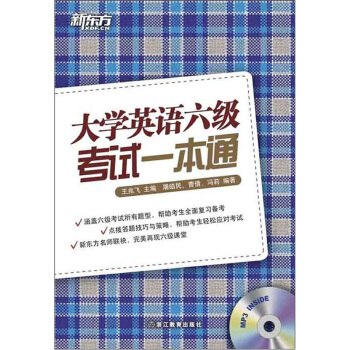
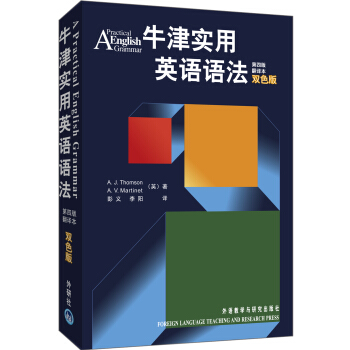




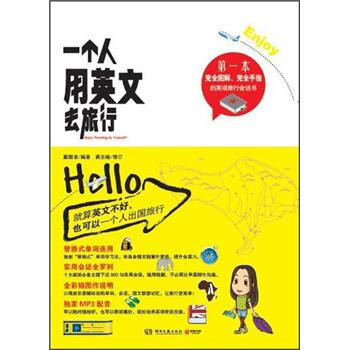
![牛津英語詞匯(初級 修訂版 附光盤) [Oxford Word Skills(Basic)] pdf epub mobi 電子書 下載](https://pic.windowsfront.com/11704271/55778e02Nab321ac3.jpg)

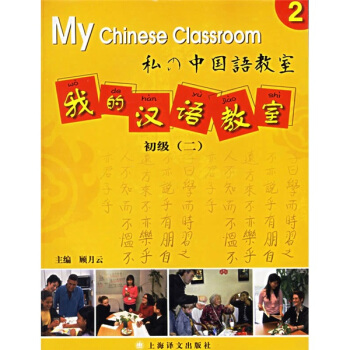

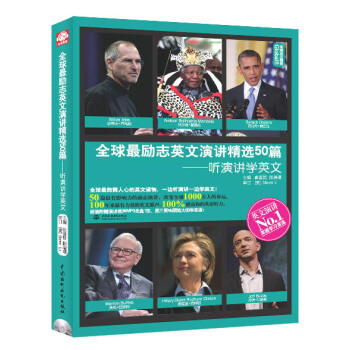
![牛津英語詞匯(高級 修訂版 附光盤) [Oxford Word Skills(Advanced)] pdf epub mobi 電子書 下載](https://pic.windowsfront.com/11704264/557793f7Nf328bdaf.jpg)
![牛津英語詞匯(中級 修訂版 附光盤) [Oxford Word Skills(Intermediate)] pdf epub mobi 電子書 下載](https://pic.windowsfront.com/11704269/55768a5fN95c9abe8.jpg)
![全新英語閱讀:閱讀理解(高一) [English Reading Comprehension Series] pdf epub mobi 電子書 下載](https://pic.windowsfront.com/11909358/570e5a68N6d3b7f1b.jpg)
![我的漢語教室:初級(三 附光盤) [My Chinese Classroom] pdf epub mobi 電子書 下載](https://pic.windowsfront.com/10013138/823e24ce-84b7-4967-9b4f-65f046c40432.jpg)

